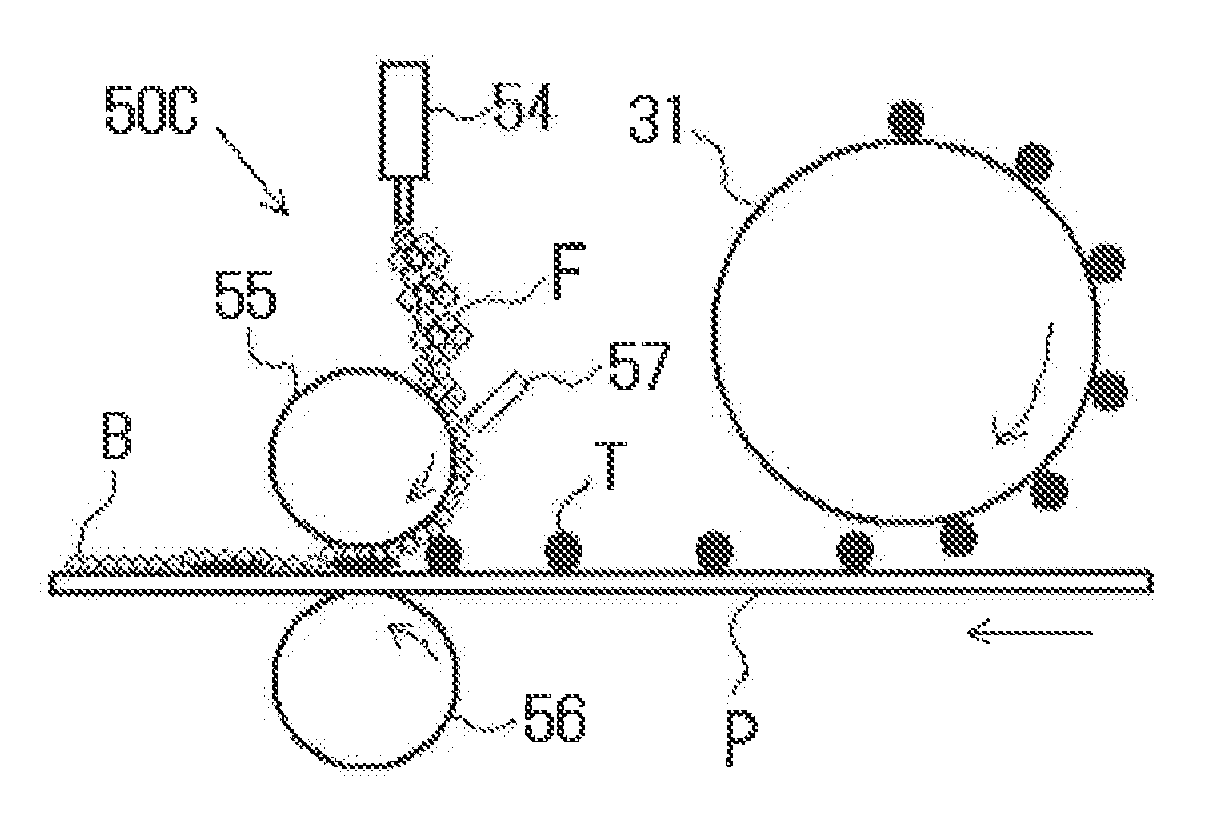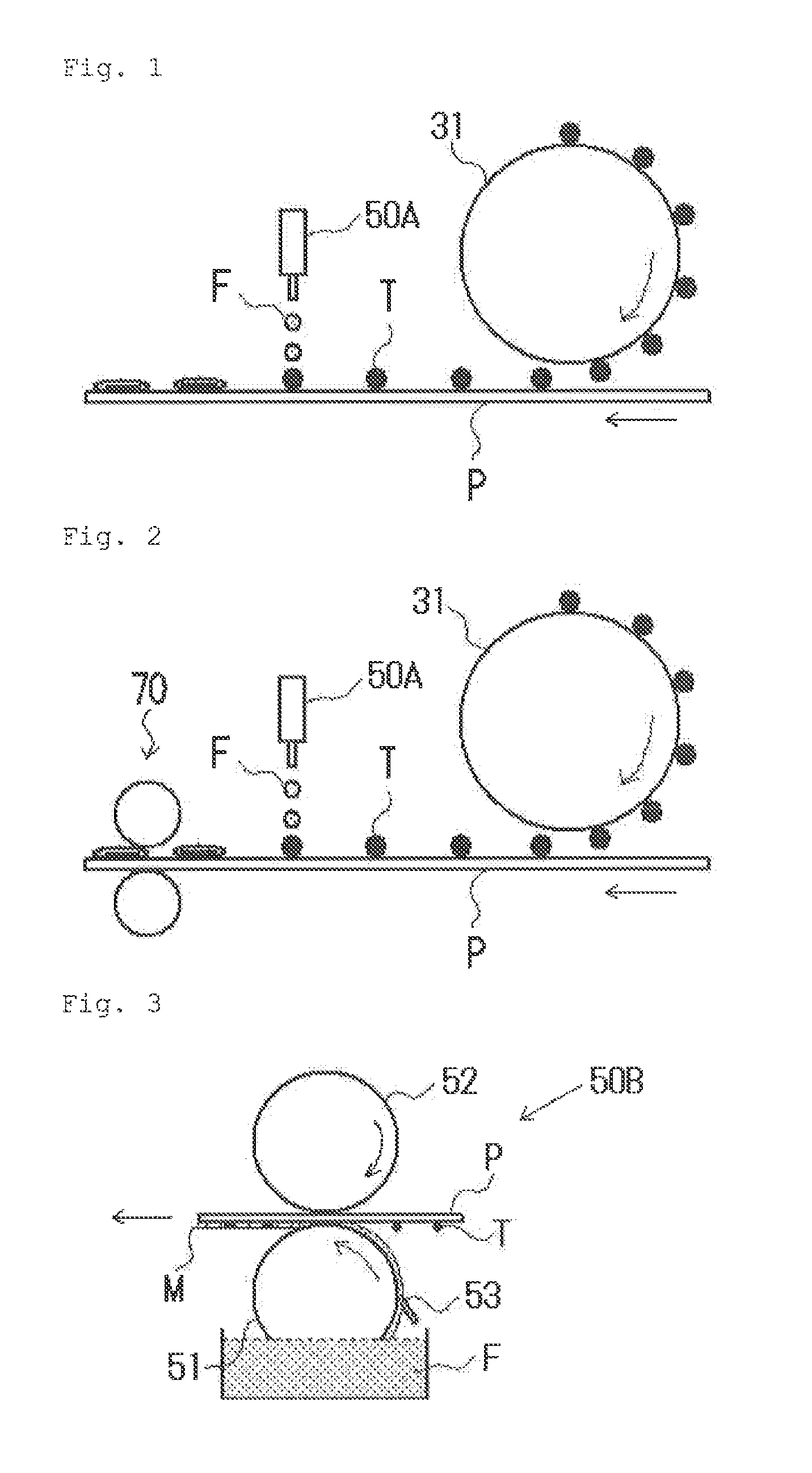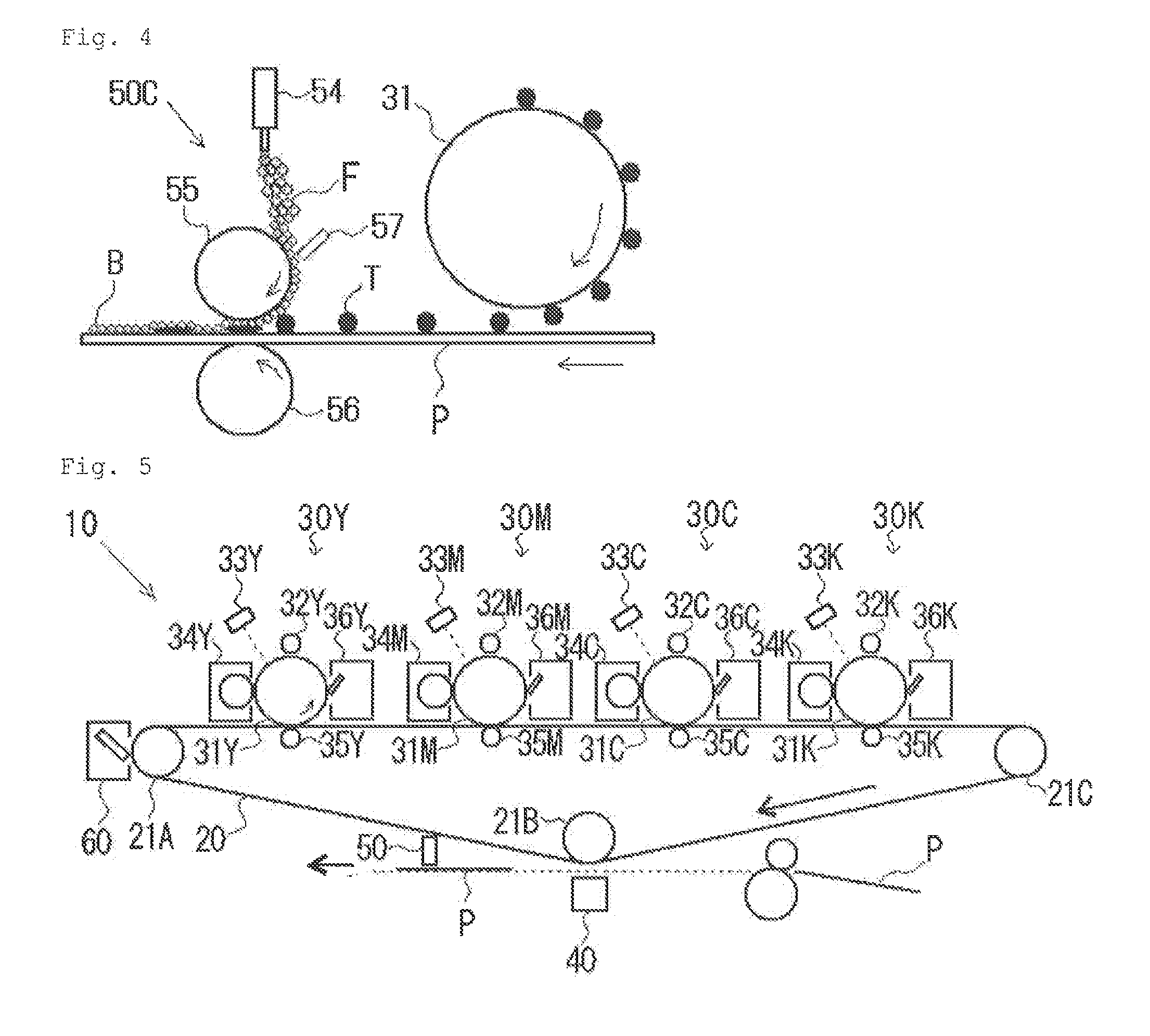Image forming method
- Summary
- Abstract
- Description
- Claims
- Application Information
AI Technical Summary
Benefits of technology
Problems solved by technology
Method used
Image
Examples
example 6
of the Manufacturing of the Toner
[0224]In (1) resin solution preparation, step of the example 1 of the manufacturing of the toner, a polyester resin [6] was likewise made except that the addition reactant (a compound represented by chemical formula (1) where R1 is a hydrogen atom) of abietic acid and acrylic acid was changed to the addition reactant (a compound represented by chemical formula (3)) of abietic acid and maleic anhydride; a toner [6] was likewise made except that the polyester resin [6] was used instead of the polyester resin [1]. Note that, the polyester resin [6] had a weight-average molecular weight of 9,000, a number average molecular weight of 3,000 and a glass-transition temperature of 63° C.
example 7
of the Manufacturing of the Toner
[0225]In (1) resin solution preparation step of the example 1 of the manufacturing of the toner, a polyester resin [7] was likewise made except that the addition reactant (a compound represented by chemical formula (1) where R1 is a hydrogen atom) of abietic acid and acrylic acid was changed to the addition reactant (a compound represented by chemical formula (2) where R2 is a hydrogen atom) of abietic acid and acrylic acid; a toner [7] was likewise made except that the polyester resin [7] was used instead of the polyester resin [1]. Note that, the polyester resin [7] had a weight-average molecular weight of 9,400, a number average molecular weight of 3,100 and a glass-transition temperature of 61° C.
example 8
of the Manufacturing of the Toner
[0226]In (1) resin solution preparation step of the example 1 of the manufacturing of the toner, a polyester resin [8] was likewise made except that 31 parts by mass of the addition reactant (a compound represented by chemical formula (1) where R1 is a hydrogen atom) of abietic acid and acrylic acid was changed to 16 parts by mass of the addition reactant (a compound represented by chemical formula (1) where R1 is a hydrogen atom) of abietic acid and acrylic acid and 15 parts by mass of the addition reactant (a compound represented by chemical formula (2) where R2 is a hydrogen atom) of abietic acid and acrylic acid; a toner [8] was likewise made except that the polyester resin [8] was used instead of the polyester resin [1]. Note that, the polyester resin [8] had a weight-average molecular weight of 9,900, a number average molecular weight of 3,300 and a glass-transition temperature of 61° C.
PUM
| Property | Measurement | Unit |
|---|---|---|
| Percent by mass | aaaaa | aaaaa |
| Strength | aaaaa | aaaaa |
| Aliphatic | aaaaa | aaaaa |
Abstract
Description
Claims
Application Information
 Login to View More
Login to View More - R&D
- Intellectual Property
- Life Sciences
- Materials
- Tech Scout
- Unparalleled Data Quality
- Higher Quality Content
- 60% Fewer Hallucinations
Browse by: Latest US Patents, China's latest patents, Technical Efficacy Thesaurus, Application Domain, Technology Topic, Popular Technical Reports.
© 2025 PatSnap. All rights reserved.Legal|Privacy policy|Modern Slavery Act Transparency Statement|Sitemap|About US| Contact US: help@patsnap.com



